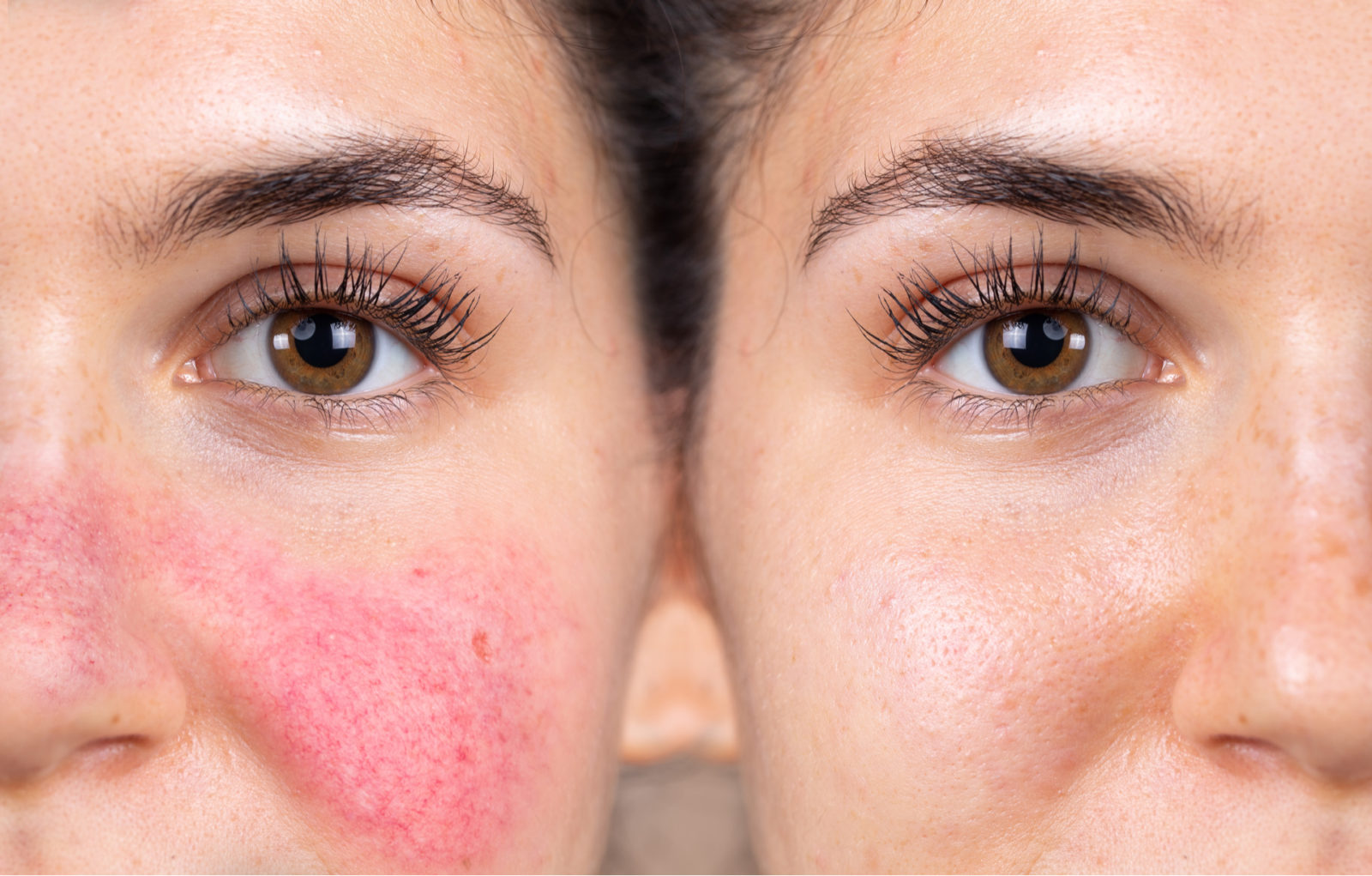Understanding Rosacea: Symptoms, Treatment, and Management
Rosacea is a chronic but benign skin condition characterized by redness and visible blood vessels, particularly on the face, neck, and chest. There are four types of rosacea, each with distinct symptoms. In addition to facial redness, rosacea can cause symptoms such as flushing, acne-like breakouts, swelling, bumpy or thickened skin, and red, swollen eyes. These symptoms can vary in severity, with some individuals experiencing occasional flare-ups, while others may have persistent redness and skin changes over time. Some people with rosacea also report stinging or burning sensations, and their skin may become either excessively dry or oily. Enlarged pores are another common feature.
Did You Know?
Rosacea is a common condition in the United States, affecting approximately 16 million people, although many cases remain undiagnosed. While it is most frequently diagnosed in light-skinned individuals of Celtic or Scandinavian descent, rosacea can affect anyone, regardless of skin tone, and can even develop in children. The condition often begins in individuals between the ages of 30 and 50. Well-known figures such as President Bill Clinton, Mariah Carey, Princess Diana, and Renee Zellweger have also publicly discussed their experiences with rosacea.
Frequently Asked Questions
How do I know if I have rosacea?
Many people with rosacea may not realize they have the condition. If you experience persistent skin redness, flushing, visible blood vessels, acne-like breakouts, thickening skin, or swollen eyes, it’s important to see a dermatologist for a proper diagnosis. Early diagnosis and treatment are crucial, as rosacea can worsen over time if left untreated.
What should I expect from rosacea treatment?
While there is no cure for rosacea, various treatments can effectively manage and alleviate symptoms. Your dermatologist may recommend a combination of topical treatments, such as antibiotics, oral medications, and light or laser therapies to reduce redness and inflammation. For individuals with thickened skin, procedures like dermabrasion may be used to help restore a smoother skin texture.
How can I help manage my rosacea?
While rosacea cannot always be prevented, there are steps you can take to minimize flare-ups and manage the condition. Daily use of sunscreen is essential to protect your skin from sun exposure, which can exacerbate rosacea. If you have ocular rosacea (rosacea of the eyes), cleaning your eyelids regularly can help reduce irritation and swelling. Additionally, avoiding known triggers—such as hot drinks, spicy foods, or extreme temperatures—can also help keep symptoms in check.


